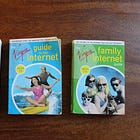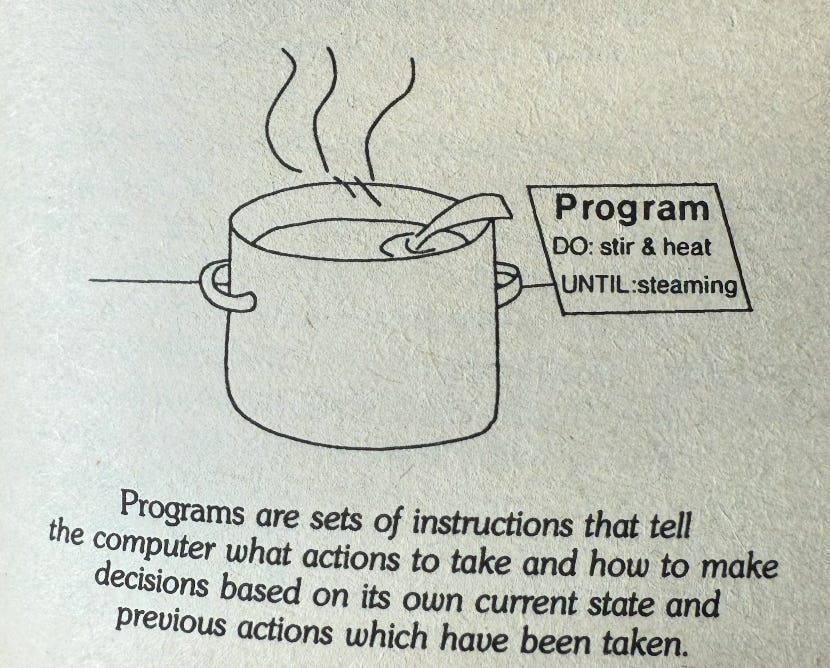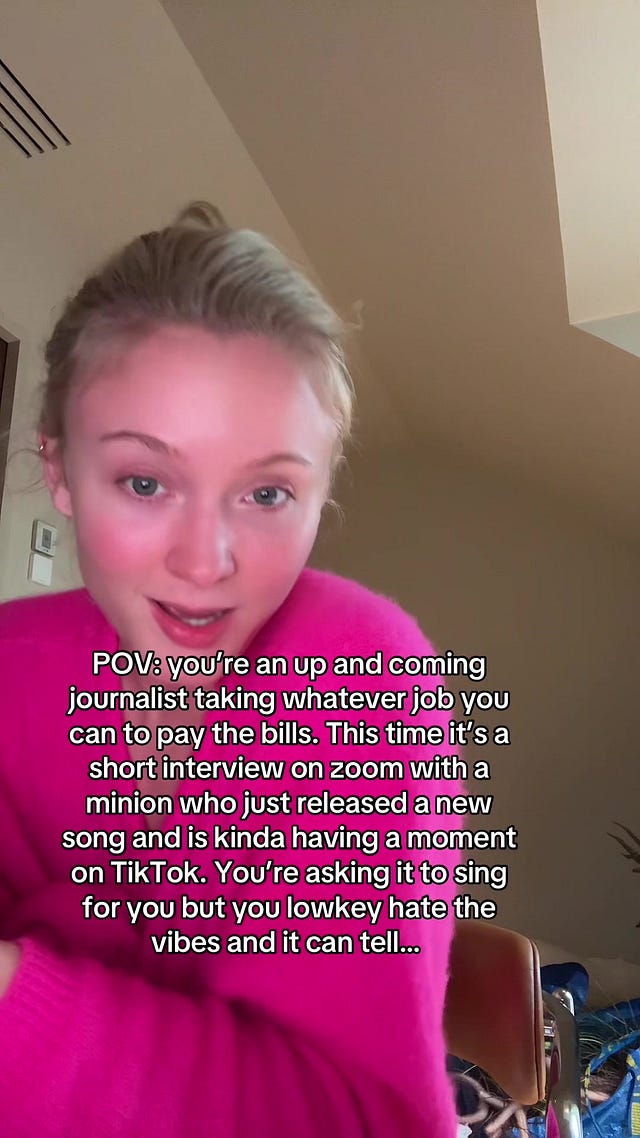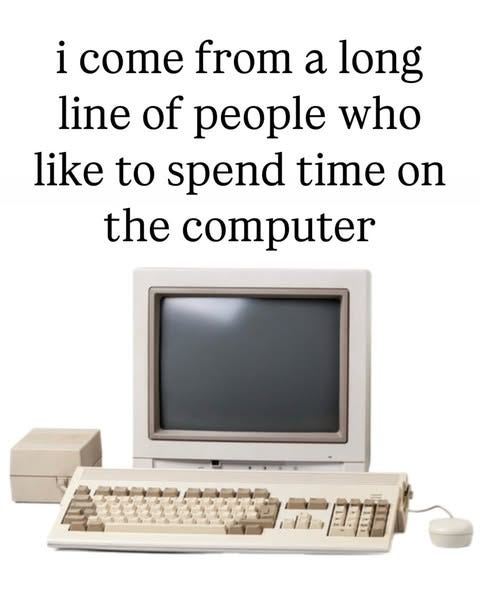'The story of the future is what you will be able to do with computers'
'The Electronic Cottage,' a 1981 book by Joseph Deken, contains both practical guidance and dreamy optimism about personal computing.
Today’s issue of PHONE TIME includes: The 1981 book “The Electronic Cottage” will teach you about hardware, software, and everything else you need to know about the personal computer.
Elsewhere online: the inaugural TIME100 Creators list, rest in peace New York Newsday, and a zine about analog filmmaking.
“There is a revolution underway. It promises to change not only the way we live, but ultimately the way we think.”
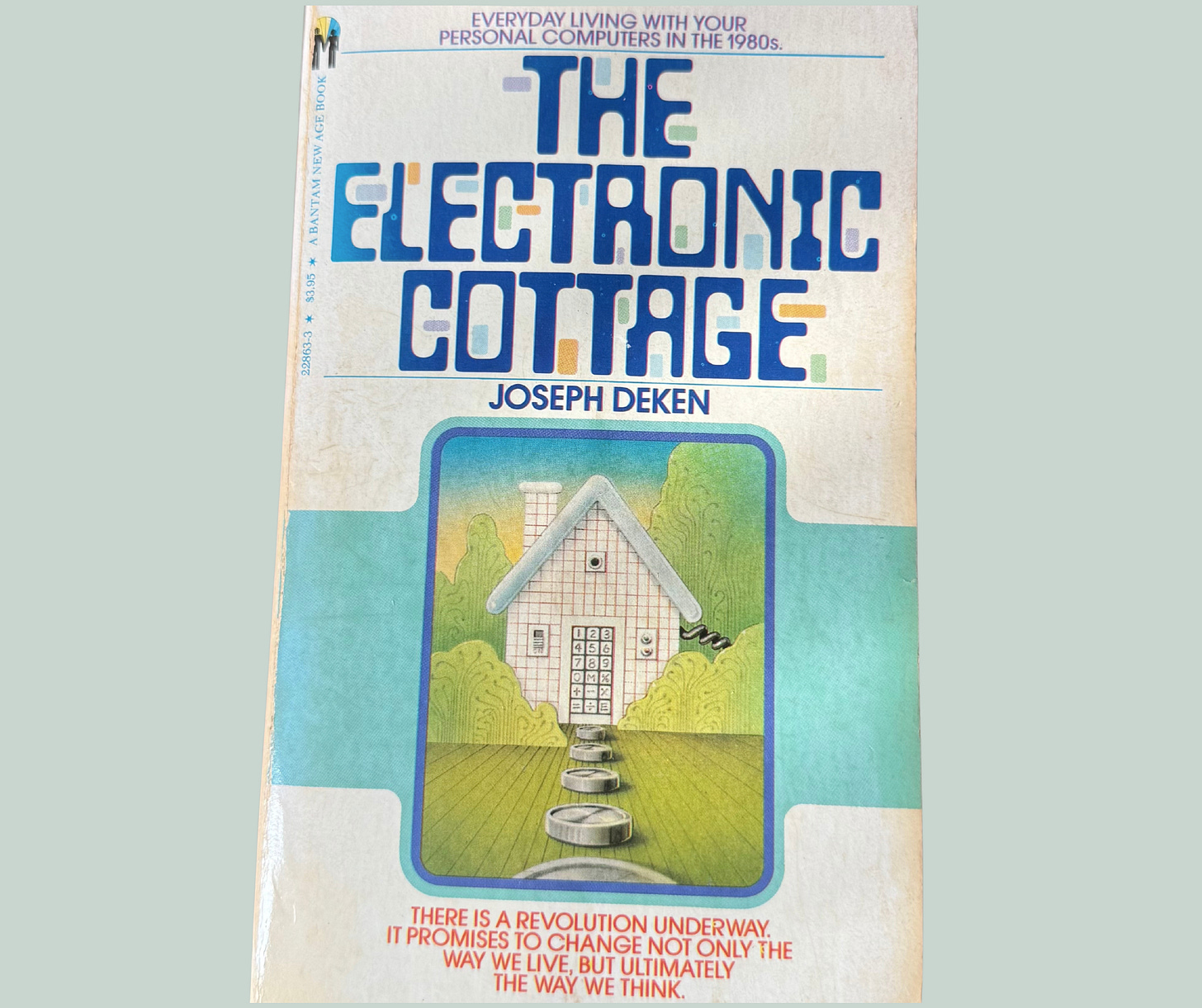
Whenever I feel a lack of inspiration or hope for the web, I’ll turn to one of the several old internet guidebooks I picked up at a used bookstore. They’re a reminder that many of the internet’s problems are not new to this month, year, decade, or even century. These guides are often filled with wide-eyed optimism for a dazzling future that seems naive in retrospect, but still gives us a compass for what the web could be, even if its a faraway dream.
In his 1981 book “The Electronic Cottage,” Joseph Deken borrows the phrase from futurist Alvin Toffler, who used it in his book “The Third Wave” to theorize how technological advances would shift the locus of work from factories and offices back into the home. Over twelve chapters, Deken takes readers through the basics of personal computing, including hardware, software, logic, memory, interfaces, and games.
But the book’s best moments are its offerings of simple wisdom, often paired with illustrations. Here are a few of my favorites.
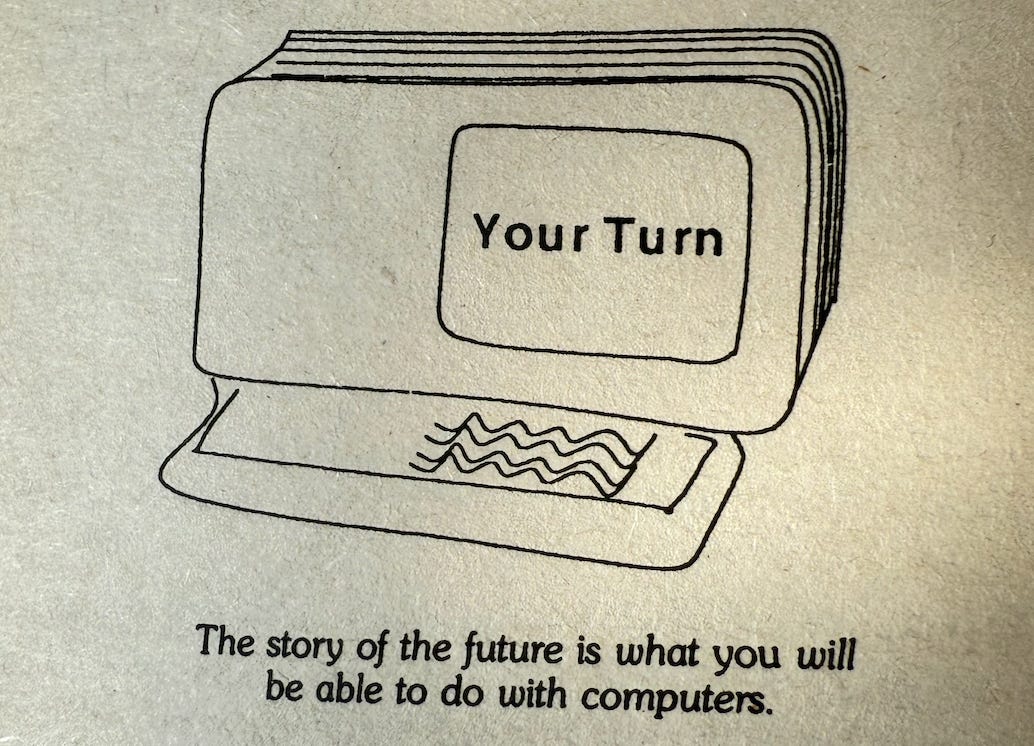
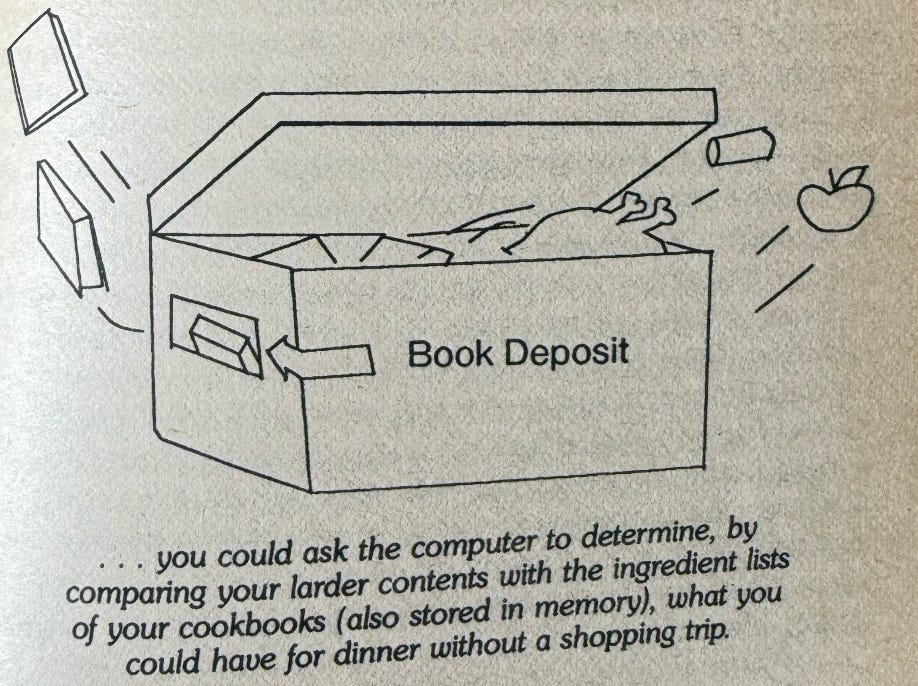
Other than the illustrations, I was most drawn to Chapter Ten, “Harnessing the Information Explosion.” Deken touches on many ways the personal computer would reinvent information flow, including in newspapers and magazines, libraries, political debates, advertisements, public relations.
“Despite what salespeople and far-gone hobbyists would tell you, it is obvious that a newspaper does not undergo any substantial improvement simply by virtue of becoming ‘electronic.’ You may be able to subscribe to Teen Crush magazine with your educational computer, or Hollywood Scandals Review on the computer news network, but you will get little education or news in the process,” Deken writes.
He adds, “In most areas, the technological capability to produce computer power is far ahead of the human understanding of how to use that power effectively and cooperatively.”
From the archives
In a previous newsletter, I dug into some college newspaper archives to see how students were using technology years ago. I’ll try to make it a regular section, pulling from various source materials. If you come across anything cool, send it my way!
“Barq’s bit me in the … my computer is fried” — Andrew Smeall, The Yale Daily News, Feb. 20, 2004
“How is it that something so cheap, like root beer, can destroy something so expensive, like my computer? What is the fairness in that? If computers are so fragile, why don't people write more poetry about the fleeting, ephemeral nature of the computer? Why don't poets write more poems about the triumphant victory of the little soda against the expensive machine?”
“It seems that every major publication from Newsweek to The Washington Post has added a box, column, or page devoted to computers and the Net. Most, like Newsweek’s ‘CyberScope,’ include snatches of pertinent net news presented with buzzwords and hey-we’re-down-with-this-hip-cyber-stuff writing style,” features editor Jessica Barron wrote in the Sept. 15, 1995 issue of Vassar College’s The Miscellany News. “Technophobes may now find it hard to pick up any magazine (even a highly cerebral issue of Cosmopolitan) without hearing more than they want to about the evil computers that will one day rule this planet (if they don’t already).”
Barron goes on to announce the launch of a new computer column in the paper, simply titled “The Computer Column.” She also gives a list of “Thirteen Things to Announce When You’re Wired,” which actually only contains ten items. Here are some of my favorites.
“Stay in touch with your parents. Write them an e-mail. (You don’t have to be a Gen Xer to be hip to this cyber thing.)”
“Stare at your screen-saver until you are hypnotized. I’ve watched Boris the Cat for hours, and one time I saw a dog enter the screen and maul him.”
“Scour the Web and collect artsy fonts. (I know a girl whose goal in life is to find the perfect font. She already has found an excellent Cyrillic alphabet.)”
Elsewhere online
“What do you have that can’t be delivered by Pop Crave? That, I think, is everyone’s question.” The perfect kicker from Charlotte Klein’s Intelligencer story on the media’s “traffic apocalypse.”
Writer Alexandra Meyer’s daughter named her imaginary friend “Instagram.” In Business Insider, Meyer wrote about how the event made her realize she needed to dial back her own social media usage.
“When I asked my daughter what she thought Instagram was, she said, ‘Where you buy things from.’
I was somewhat relieved she didn't realize it's a photo-sharing site where other users and I curate our photos into a perfect holiday highlight. However, I am concerned that she clearly thinks I spend a large portion of the day shopping on my phone. I can't work out which is better,” Meyer wrote.
TIME released its inaugural list of TIME100 Creators recognizing the “most influential digital voices.” The list is divided into “titans,” “entertainers,” “leaders,” “phenoms,” and “catalysts.” Included creators include Alex Earle, Khaby Lame, Mr. Beast, Joe Rogan, Alex Cooper, Haliey Welch, Charli D’Amelio, Hasan Piker, and Jake Shane.
Richard Scarry’s Busy World is collaborating with Anastasia Inciardi on a mini print vending machine. Bookstores interested in hosting a machine can fill out an inquiry form.
While Scarry died in 1994, the Busy World he created lives on, especially in fan-created memes and art. I collected many of these examples in a “richardscarrycore” Are.na board I made in 2021.
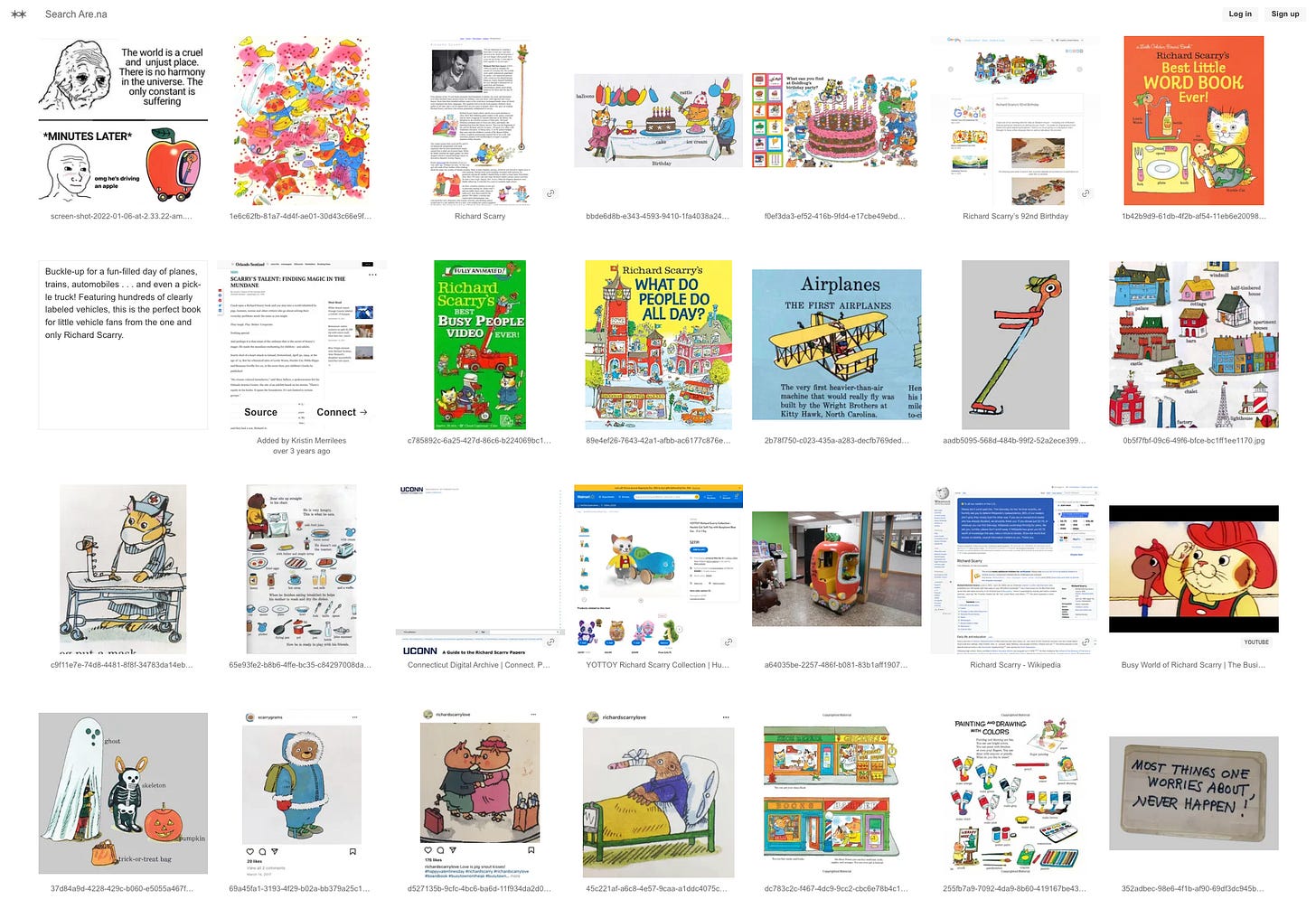
I like Sandw1tch Shop for art and clothes featuring characters from Scarry’s Busytown, “Peanuts,” and “Garfield.”
New York Newsday, established in 1985 as a New York City-specific offshoot of Long Island paper Newsday, closed thirty years ago this month.
“To me, back then, newspapers had distinct personalities: The Daily News was a desk sergeant with a heart of gold but a limited worldview; the Post a fast-talking guy you met in a bar who was really funny but whom you didn’t quite trust; the Times a middle-aged lady who enjoyed watching Masterpiece Theatre on Channel 13. And New York Newsday? I was never quite sure, and maybe that was part of the problem,” Wendall Jamieson writes in Columbia Journalism Review.
On July 15, YouTube is updating its guidelines to “better identify mass-produced and repetitious content.”
All of Analog Cookbook’s issues are now available digitally. The biannual zine about analog filmmaking was started in 2019 by Kate E. Hinshaw. There have been seven issues so far, with the most recent, released in 2023, titled “Analog Erotica.”
Intersect Arts Center in St. Louis put out a call for artists’ interpretations of the Wunderkammer, or "Cabinet of Curiosity.” Artists can submit proposals that transform a single cabinet in the center’s lobby, or use all three, with “objects, drawings, photographs, fashion, collages, installations, etc.”
If any readers are near Adelaide, South Australia, FELTspace is hosting a free weaving workshop later this month in which you will use your phone as a makeshift loom. “This process connects our smartphones with their technological predecessor, returning the smartphone back to its original function as a piece of equipment used for creating cloth,” the event listing reads.
This TikTok Zara Larsson posted is basically my job.
 Tiktok failed to load.
Tiktok failed to load.Enable 3rd party cookies or use another browser
P.S. Niche internet corners and memes of the day will be back soon.



